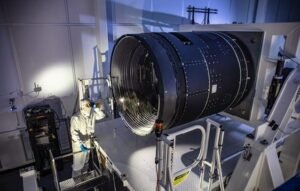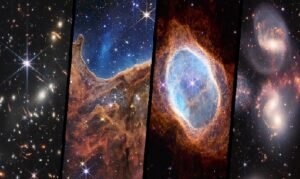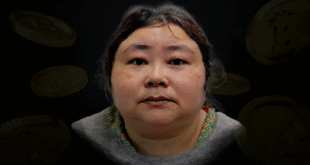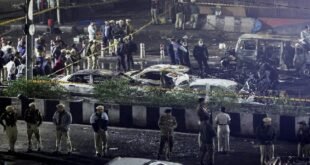25-06-2025
SANTIAGO: A powerful new telescope in Chile has released its first images, showing off its unprecedented ability to peer into the dark depths of the universe.
In one picture, vast colorful gas and dust clouds swirl in a star-forming region 9,000 light years from Earth.
 The Vera C Rubin observatory, home to the world’s most powerful digital camera, promises to transform our understanding of the universe.
The Vera C Rubin observatory, home to the world’s most powerful digital camera, promises to transform our understanding of the universe.
If a ninth planet exists in our solar system, scientists say this telescope would find it in its first year.
It should detect killer asteroids in striking distance of Earth and map the Milky Way. It will also answer crucial questions about dark matter, the mysterious substance that makes up most of our universe.
In a press conference on Monday, the observatory revealed that in 10 hours, the telescope detected 2,104 new asteroids and seven space objects close to Earth.
All other space and ground surveys combined usually find about 20,000 asteroids in a year.
This once-in-a-generation moment for astronomy is the start of a continuous 10-year filming of the southern night sky.
“I personally have been working towards this point for about 25 years. For decades we wanted to build this phenomenal facility and to do this type of survey,” says Professor Catherine Heymans, Astronomer Royal for Scotland.
The UK is a key partner in the survey and will host data centres to process the extremely detailed snapshots as the telescope sweeps the skies capturing everything in its path.
Vera Rubin could increase the number of known objects in our solar system tenfold.
Journalists visited the Vera Rubin observatory before the release of the images.
 It sits on Cerro Pachon, a mountain in the Chilean Andes that hosts several observatories on private land dedicated to space research.
It sits on Cerro Pachon, a mountain in the Chilean Andes that hosts several observatories on private land dedicated to space research.
Very high, very dry, and very dark. It is a perfect location to watch the stars.
Maintaining this darkness is sacrosanct. The bus ride up and down the windy road at night must be done cautiously, because full-beam headlights must not be used.
The inside of the observatory is no different.
There is a whole engineering unit dedicated to making sure the dome surrounding the telescope, which opens to the night sky, is dark turning off rogue LEDs or other stray lights that could interfere with the astronomical light they are capturing from the night sky. The starlight is “enough” to navigate, commissioning scientist Elana Urbach explains.
One of the observatory’s big goals, she adds, is to “understand the history of the Universe” which means being able to see faint galaxies or supernova explosions that happened “billions of years ago”.
“So, we really need very sharp images,” Elana says.
Each detail of the observatory’s design exhibits similar precision.
It achieves this through its unique three-mirror design. Light enters the telescope from the night sky, hits the primary mirror (8.4m diameter), is reflected onto the secondary mirror (3.4m) back onto a third mirror (4.8m) before entering its camera.
The mirrors must be kept in impeccable condition. Even a speck of dust could alter the image quality.
The high reflectivity and speed of this allow the telescope to capture a lot of light which Guillem Megias, an active optics expert at the observatory, says is “really important” to observe things from “really far away which, in astronomy, means they come from earlier times”. (Int’l News Desk)
 Pressmediaofindia
Pressmediaofindia




